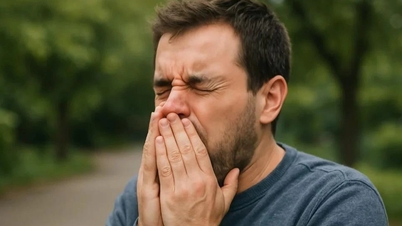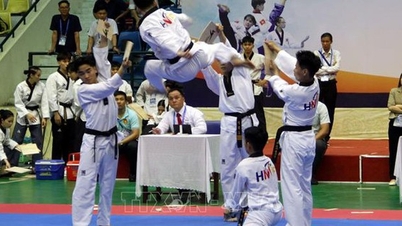1. The role of exercise for people with flu
Many people often wonder flu whether or not to exercise. In fact, mild to moderate physical activity can be very helpful when you have the flu (but not a fever). Regular, gentle exercise helps you relax, increase resistance fight disease, while reducing unpleasant symptoms caused by colds.
Depending on the physical condition and health status, patients can choose many different forms of exercise. However, it is important to note that you should only exercise at a light intensity, avoid overtraining which can be counterproductive and make the body more tired.
2. Good exercises for people with flu
2.1. Practice yoga
When sick, patients should not do heavy exercises. Some movements muscle relaxation The following simple yoga poses can help relieve uncomfortable symptoms such as headaches, stuffy nose due to flu
- Baby Pose Variation
The baby pose helps to gently stretch the muscles, focus on breathing, has a relaxing effect, and reduces the symptoms of fatigue and discomfort of the flu.
How to do:
- Kneel on the floor with a pillow or bolster placed vertically in front of you.
- Gently separate your knees to the sides but keep your big toes touching.
- Push your hips back, placing your butt back on your heels.
- Lean forward and place your upper body on a pillow or cushion, allowing your head to rest against it.
- Extend your arms straight overhead. Hold for 30 seconds to 1 minute, then return to the starting position.
- Put your feet up the wall
Putting your feet up the wall is intended to improve circulation, which can help in cases of flu accompanied by headaches.
How to do:
- Lie on your back, perpendicular to the wall, lift your legs and push your tailbone forward until it is very close to or touching the wall.
- Walk your feet up the wall until they are straight or almost straight.
- Place your arms in a comfortable position. They can be outstretched or at your sides.
- Hold the pose for up to 10 minutes.
- Camel Pose Variation
This is a gentler version of camel pose, helping the practitioner open the chest and focus on breathing.
How to do:
- Kneel on the floor with your knees hip-width apart and your feet behind you hip-width apart.
- Lean back slightly, placing each hand on either side of your waist.
- When comfortable, let your head slowly tilt back.
- Take a deep breath and slowly let your body feel the pose.
- Cobra pose
Like the camel pose, the cobra pose opens up your chest, allowing you to breathe more deeply and bring more oxygen to your lungs. This helps relieve chest congestion and relieves the aches and pains of the flu.
How to do:
- Lie face down on the mat with your legs hip-width apart.
- Place your palms down under your shoulders with your elbows at your sides.
- Use the force in your palms to lift your chest and upper body off the ground, relaxing your tailbone.
- Roll your shoulders down and back, eyes looking forward, and breathe deeply.
- Hold the pose for 30-60 seconds or longer.

Cobra Pose
- Downward facing dog pose
Downward-facing dog can help relieve pressure on headaches and aid blood flow to the sinuses.
How to do:
- Get on your hands and knees on the floor with your fingers facing forward and your knees hip-width apart.
- Tuck your toes and lift your butt up, pointing it straight up toward the ceiling, heels touching the floor. Your body will form an upside-down V shape.
- Hold the pose for 30-60 seconds or longer.
2.2. Other physical activities
In addition to some of the above exercises, flu patients can go for a walk, practice qigong... if the symptoms are mild (remember to wear a mask when going out). Exercising to sweat will help the patient feel lighter. You should choose to exercise in quiet places with fresh air such as parks or home gardens. When walking, take deep breaths to clear the respiratory tract.
In addition, slow qigong exercises can also be useful in this case. Qigong does not make you sweat much, but it helps increase blood circulation and reduce stress. People who are sick for a long time and have to stay in bed all the time should practice a few qigong movements every day. These exercises do not require much physical strength or equipment, and you can even practice them right in your room. There are many different qigong movements for adults, children, the elderly, and even pregnant women.

Walking to sweat will help people with flu feel better.
3. Notes when exercising for people with asthma
- Good time of day to practice
The best time to exercise is in the morning. Depending on the weather, hot or cold, you can choose a suitable time frame. For example, in winter, the early morning weather is often very cold, you can exercise between 9-10 am.
Exercising in the morning helps the body produce endorphins, which help refresh the mind and reduce fatigue. Do not exercise too close to bedtime as it can cause difficulty sleeping.
- Do not exercise when you have a fever.
Flu can cause symptoms ranging from mild to severe, the first common symptom being a high fever, sometimes 39 - 40 degrees Celsius. At this time, you should rest and stop exercising until the fever goes away. Because over-exercising when sick can be counterproductive and make the body take longer to recover.
When symptoms subside with manifestations such as stuffy nose, dry cough ... you can continue to exercise, just note that the exercise consumes less energy overall. For example, if you usually exercise for an hour at a time, including 30 minutes of high intensity exercise, you should adjust it to 20-30 minutes of low intensity exercise such as stretching, yoga ...
- How to exercise without harming your health
When you are sick, one of the most important things to do when exercising is to listen to your body and adjust the intensity and frequency of your workouts accordingly, especially when you feel uncomfortable.
Activities that increase your heart rate can make people with the flu tired, such as jogging, light weight lifting, moderate cycling... However, if this is part of a regular exercise routine and does not make your symptoms worse, you can do it. High-intensity exercise overworks a body that is already stressed from the illness. Sprinting, endurance training, strength training, high-intensity cycling... should be limited at this time.
In addition, patients need to pay special attention to staying hydrated. Drinking fluids such as water and warm, caffeine-free herbal teas will hydrate the body and relieve a sore throat. Along with that, following your doctor's instructions on medication, diet, rest, and getting 8 hours or more of sleep can make a big difference in relieving the disease.
BSCKI. Ngo Duc Nhuan
Source



![[Photo] Vietnamese and Hungarian leaders attend the opening of the exhibition by photographer Bozoky Dezso](https://vphoto.vietnam.vn/thumb/1200x675/vietnam/resource/IMAGE/2025/5/28/b478be84f13042aebc74e077c4756e4b)
![[Photo] 12th grade students say goodbye at the closing ceremony, preparing to embark on a new journey](https://vphoto.vietnam.vn/thumb/1200x675/vietnam/resource/IMAGE/2025/5/28/42ac3d300d214e7b8db4a03feeed3f6a)


![[Photo] Prime Minister Pham Minh Chinh receives a bipartisan delegation of US House of Representatives](https://vphoto.vietnam.vn/thumb/1200x675/vietnam/resource/IMAGE/2025/5/28/468e61546b664d3f98dc75f6a3c2c880)







![[Video] Do not self-treat with antiviral drugs when infected with Covid-19](https://vphoto.vietnam.vn/thumb/402x226/vietnam/resource/IMAGE/2025/5/29/4cabcd5ffc6a4911b321c0907f9905ba)









































































Comment (0)